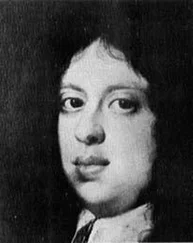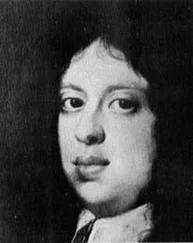Joseph Gilder - Trilbyana - The Rise and Progress of a Popular Novel
Здесь есть возможность читать онлайн «Joseph Gilder - Trilbyana - The Rise and Progress of a Popular Novel» — ознакомительный отрывок электронной книги совершенно бесплатно, а после прочтения отрывка купить полную версию. В некоторых случаях можно слушать аудио, скачать через торрент в формате fb2 и присутствует краткое содержание. Жанр: foreign_antique, foreign_prose, на английском языке. Описание произведения, (предисловие) а так же отзывы посетителей доступны на портале библиотеки ЛибКат.
- Название:Trilbyana: The Rise and Progress of a Popular Novel
- Автор:
- Жанр:
- Год:неизвестен
- ISBN:нет данных
- Рейтинг книги:3 / 5. Голосов: 1
-
Избранное:Добавить в избранное
- Отзывы:
-
Ваша оценка:
- 60
- 1
- 2
- 3
- 4
- 5
Trilbyana: The Rise and Progress of a Popular Novel: краткое содержание, описание и аннотация
Предлагаем к чтению аннотацию, описание, краткое содержание или предисловие (зависит от того, что написал сам автор книги «Trilbyana: The Rise and Progress of a Popular Novel»). Если вы не нашли необходимую информацию о книге — напишите в комментариях, мы постараемся отыскать её.
Trilbyana: The Rise and Progress of a Popular Novel — читать онлайн ознакомительный отрывок
Ниже представлен текст книги, разбитый по страницам. Система сохранения места последней прочитанной страницы, позволяет с удобством читать онлайн бесплатно книгу «Trilbyana: The Rise and Progress of a Popular Novel», без необходимости каждый раз заново искать на чём Вы остановились. Поставьте закладку, и сможете в любой момент перейти на страницу, на которой закончили чтение.
Интервал:
Закладка:
Jeannette L. Gilder
Trilbyana: The Rise and Progress of a Popular Novel
It is many a year since a book has attained the popularity of Mr. du Maurier's second novel, "Trilby" (printed as a serial in Harper's Monthly, from January to August, inclusive, and then issued in book-form, on Saturday, 8 September, 1894). Several others have sold as well – some even better; but neither "Looking Backward" nor "Ben Hur" (to name but these two) has captivated the public in the same manner or in the same degree as this romance, this fairy-tale of the three British artists, the blanchisseuse who posed for "the altogether," the Parisian masters of painting, and the trans-Rhenish masters of music, in the Latin Quarter of the early fifties. It is a story written out of the author's very heart, and it finds its way straight to the hearts of his readers. This is the secret of its unique success. Its charm is emotional rather than intellectual. With all its art, it impresses one as essentially ingenuous. It is a book to be loved, not merely to be liked or admired.
On 16 June, 1894, The Critic printed, with comment, a letter in which Mr. Whistler protested to the editor of an English newspaper against the libellous likeness of himself to be found in the character of Joe Sibley, one of the minor personages in the story of "Trilby." In the fall there were so many sporadic calls for this number of the paper as soon to exhaust the supply carried over from the summer. There seemed to be a general desire on the part of our readers to bind up the Whistler letters, etc., with the text and pictures of "Trilby" as printed in Harper's Monthly, the American artist's protest having led to a slight revision of the story before its appearance in book-form. The hint was acted upon; and two pages of "Trilbyana" were printed in The Critic of Nov. 17.
Though an extra edition was struck off, the call for this number has at last exhausted the supply; and the present pamphlet, containing among its many items of interest a majority of those that have found a place in the columns of The Critic, may fairly claim to be issued in response to a popular call.
J.B. & J.L. Gilder."Trilby: a Novel"
When "Trilby" began to appear as a serial in Harper's Monthly , January 1894, Mr. Henry James prophesied that it would prove to be a glorification of "the long leg and the twentieth year." The prophecy was soon verified. At the outset, indeed, it seemed as if the glorification were to be, not so much of the long leg, as of the large and shapely foot. The whole story rested for a while on one of Trilby's feet. We say one, for it was only one of them – the left one – that Little Billee immortalized by drawing on the wall of the studio in the Place St. Anatole des Arts; but they were equally perfect. As the young woman who had the happiness of standing on this foot proclaims, kicking off one of the big slippers in which she is introduced to us, "It's the handsomest foot in all Paris: there's only one in all Paris to match it, and here it is" – and off goes the other slipper. The sketch of it that proves Little Billee already a master of his art is not shown till near the end of the book; and neither this nor Mr. du Maurier's own portrait of the pieds nus on page 21 fully realizes one's notion of the thing's unapproached perfection.
As we have said, the whole story rests for a while on one of these handsome feet; but the novelist manages at last to free his neck from the thraldom of the "slim, straight, rosy heel, clean-cut and smooth as the back of a razor," and proceeds to gratify our curiosity to know something about the strange being who poked about the studios in the Quartier Latin in the early fifties, bare-headed, and wearing a big, military coat with epaulets, which she could throw off when she posed for the ensemble as easily as she could kick off the loose slippers when only her foot was desired as a model. It will be seen that Trilby was not a woman of any social standing. Her father was an educated Irishman, her mother (his wife) a pretty barmaid. They both were dead, and she herself was a professional model.
Two things about her were equally marvellous: one was her foot, the other her voice – an organ of surprising power, range and sweetness. No less extraordinary, perhaps, was the trick that nature had played upon her, by coupling so glorious a voice with an ear that could not distinguish one note from another – could scarcely tell a bass from a treble, and permitted her to sing so badly that her hearers either stopped their ears, laughed in her face, or bolted from the room. The American song "Ben Bolt" was the one she liked the best to sing, and sang the worst. There was something else about her, almost as strange as her beautiful feet, her magnificent voice and her defective (or altogether lacking) ear for music; and that was the purity of her character. She had had affairs with half a dozen men in the studios, without really knowing that it wasn't the right thing to do. But her heart remained spotless (so Mr. du Maurier assures us); and it is a most unfortunate thing that Little Billee's mother comes tearing over to Paris, leaving the peaceful dales and dairies of Devonshire behind her, in her mad haste to break the engagement which Trilby has at last made with the young English painter, after having repeatedly refused to do so, notwithstanding her great love for him. Mrs. Bagot has no difficulty in convincing her that she is no worthy mate for Little Billee; and she accordingly runs away from Paris, heart-broken, and becomes a blanchisseuse de fin . Little Billee's heart is broken, too; or if not broken, benumbed; and henceforth, though he becomes a most successful artist, and the pet of all London, he takes his pleasures and successes sadly and listlessly, caring nothing for the wealth and fame that come to him.
In the meantime a great prima-donna appears upon the European stage, and all the world bows down before her. Happening to be in Paris, Little Billee is persuaded by his old chums, Taffy the Yorkshireman ex-soldier, and the "Laird of Cockpen" – painters both, – to go and hear the prodigy. Fancy their stupefaction at recognizing in the glorious singer the tuneless Trilby of five years gone! No longer Trilby O'Ferrall, but La Svengali, wife of their old acquaintance Svengali the Jew, who had recognized the possibilities of her voice when he first heard it in their Paris studio, and had afterwards captured her and cultivated it and by his mesmeric arts trained her as a singer and even made her love him as a dog loves his master. A day or two later, meeting him at a hotel, Svengali spits in Little Billee's face, and gets his nose pulled for his pains by Taffy. And then the great prima-donna and her master go to London; and Trilby breaks down in trying to sing "Ben Bolt," and is hooted off the stage – Svengali's sudden death in a stage-box (unknown to anyone in the house) having broken the mesmeric influence that has made her a singer. She pines away, surrounded by her old friends the Englishmen, and an object of solicitude to all Christendom; and after her death Little Billee pines away, too, and no one is left but the big ex-officer Taffy – with the exception of Trilby, the most attractive character in the book. For Little Billee (whose sister he marries, after the death of Trilby, whom he, too, loved) is, truth to tell, somewhat of a prig, even after the sight of Trilby at the concert in Paris has roused him from the unemotional state to which her flight consigned him, years before; and Svengali is a beast, and Gecko is insignificant.
The text of the book is the counterpart of its illustrations, for Mr. du Maurier writes as he draws – with infinite precision and detail. Nothing is omitted that could possibly heighten an effect. Instead of flashing a scene or a sensation upon you, he describes it and redescribes it, heaping up the adjectives in masses. His art is a different art from Kipling's, for instance, which never wastes a syllable. But the point to be decided is not one of methods but of results; and as a whole "Trilby" is delightful. It is a slow and laborious process by which the author creates an impression and surrounds his characters with the atmosphere he wishes us to see them in; but he does finally create the impression and the atmosphere, and in so doing justifies his means. He has steeped his mind in Thackeray, and so has had a noble master. Like "Peter Ibbetson," his new story is unique. It is a book that could have been written only by an artist – and illustrated only by the author; it is a book, moreover, in which the man and the style are one.
Читать дальшеИнтервал:
Закладка:
Похожие книги на «Trilbyana: The Rise and Progress of a Popular Novel»
Представляем Вашему вниманию похожие книги на «Trilbyana: The Rise and Progress of a Popular Novel» списком для выбора. Мы отобрали схожую по названию и смыслу литературу в надежде предоставить читателям больше вариантов отыскать новые, интересные, ещё непрочитанные произведения.
Обсуждение, отзывы о книге «Trilbyana: The Rise and Progress of a Popular Novel» и просто собственные мнения читателей. Оставьте ваши комментарии, напишите, что Вы думаете о произведении, его смысле или главных героях. Укажите что конкретно понравилось, а что нет, и почему Вы так считаете.












